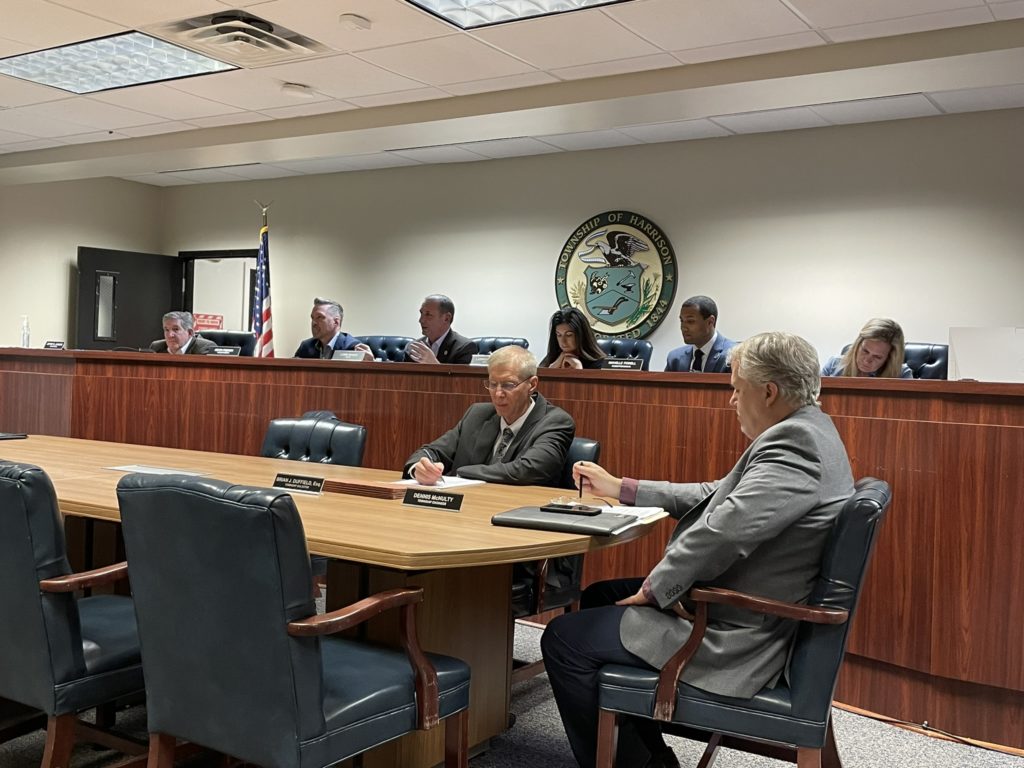
The Harrison Township committee unanimously adopted an ordinance and resolution at its meeting on March 4 that each pertains to an aspect of the new township budget.
The ordinance involves only the upcoming 2024 budget, which is not finalized but is expected to be introduced at either the committee’s next meeting at 6:30 p.m. on Monday, March 18, or at the following session at the same time on Monday April 1, according to Mayor Louis Manzo.
The measure will extend the current temporary budget for the year while finishing touches are made on the new financial plan.
“This is just extending our temporary budget for the year,” explained Township Administrator Dennis Chambers. “We institute that at the first meeting of the year. It gives us a certain percentage of money to utilize as we’re preparing to introduce and adopt our final budget for the year.”
“When all the numbers fall in line, but if line starts getting low because of expenditures,” he added, “we just pass this resolution to extend it a bit.”
The resolution enables township workers to be paid in the four-to-five-month period until the budget is adopted, expected to happen at some point next month.
The adopted ordinance meanwhile adjusts the budget increase from 2.5% to 3.5%, an amount first introduced at the committee’s Feb. 20 session. The public hearing took place on March 4.
“This is an annual and protocol ordinance that we draft and pass prior to our budget, which will be introducing within the next meeting or two,” said Mayor Louis Manzo. “That allows for the appropriation limits, based on state edicts, to be raised from 2.5% to 3.5%.”
During the public hearing, Gloucester Township resident Paul Krug asked why a 1%-increase is necessary for Harrison.
“There’s certain exceptions that the state allows us to take as a direct expenditure,” Chambers pointed out in response to Krug. “There’s a couple calculations. There’s appropriation cap, which is your annual spending, and then there’s cap levy, which leans more to the broader talk of when you hear about the state 2%-cap that was instituted years ago.
“Generally the increase allows for those exceptions that are taken outside the calculation, and it generally pertains to normal increases,” Chambers added. “It gives us a little bit of a cushion for the things that we generally have no control over.”


